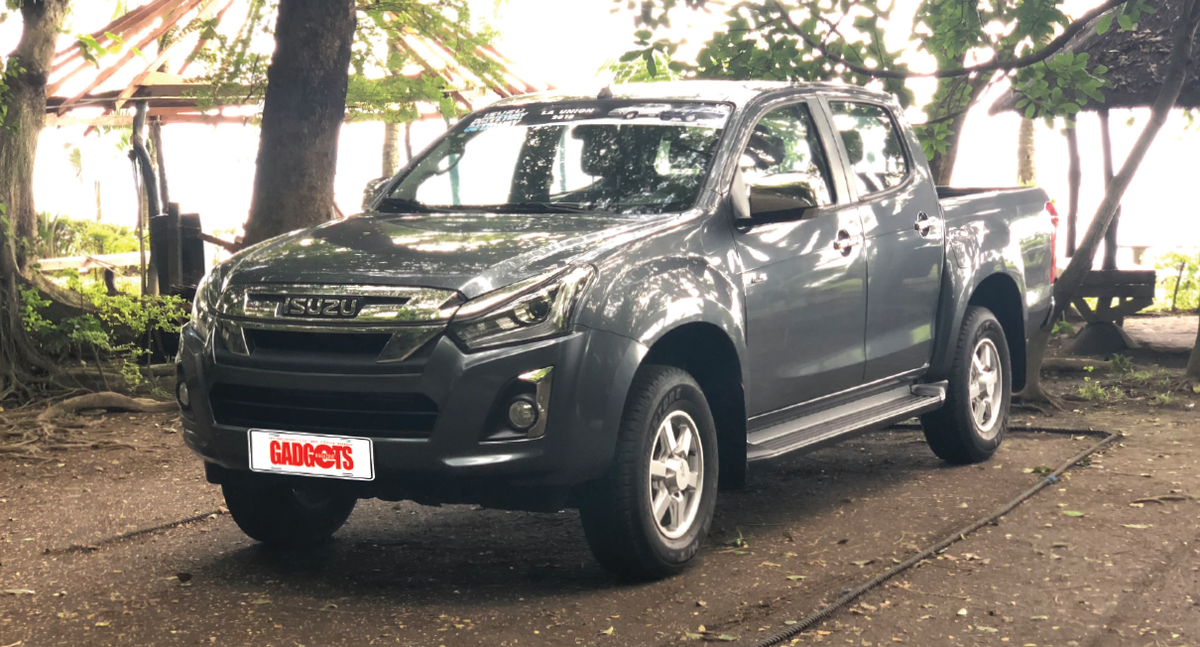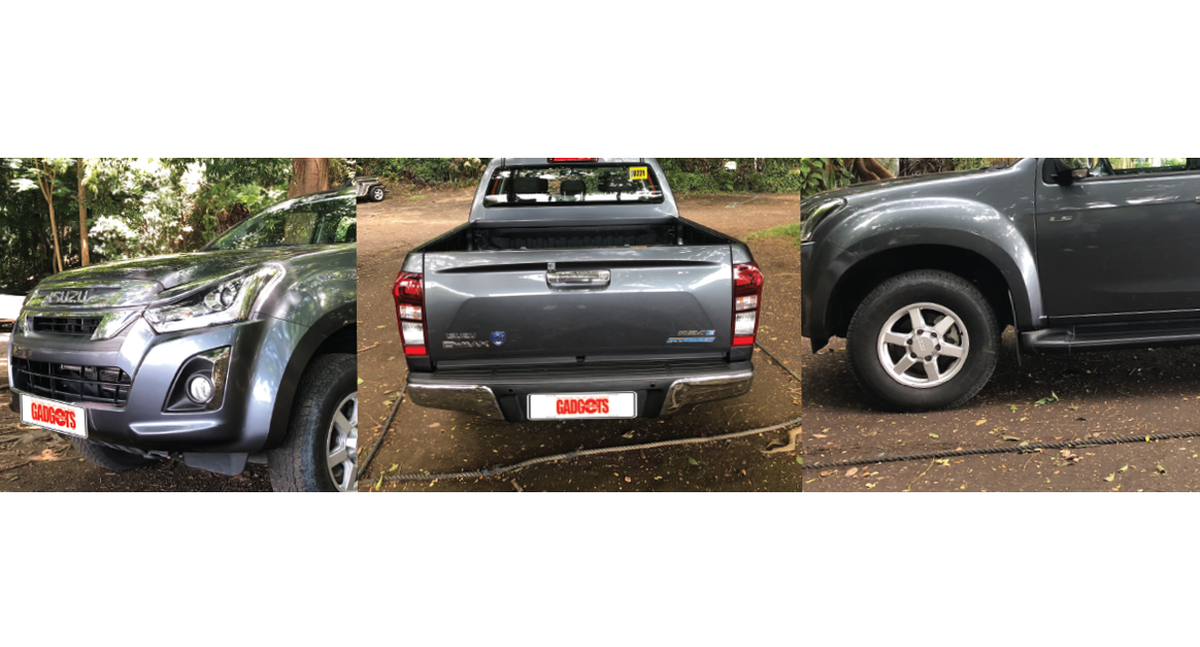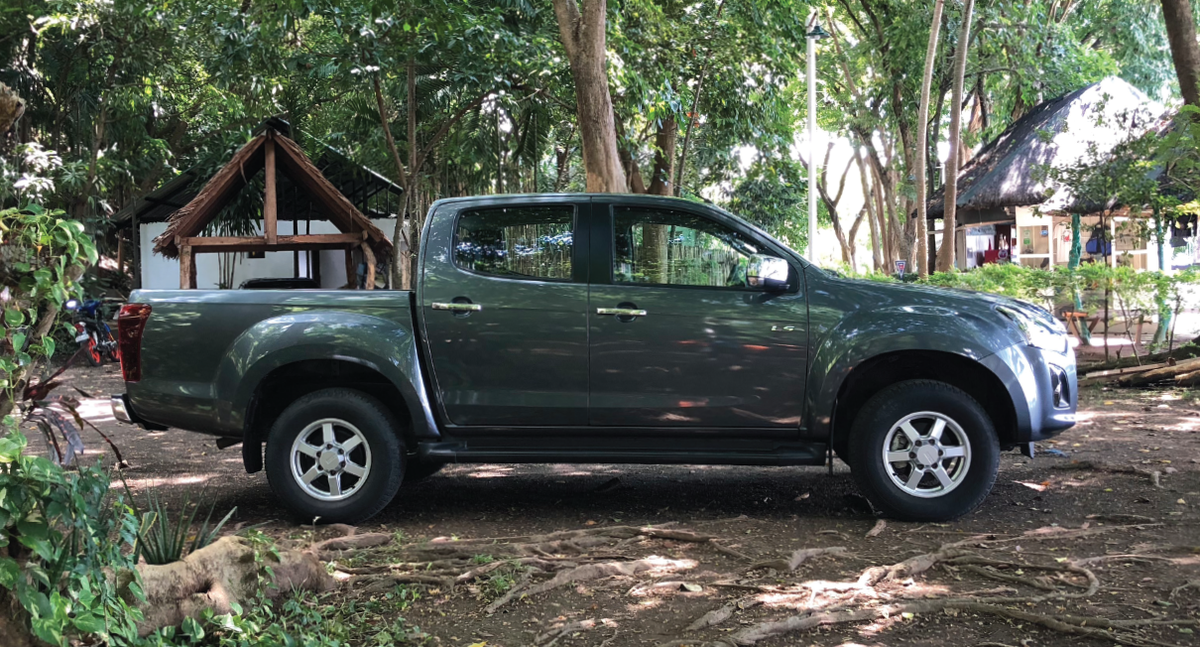Although the new Isuzu RZ4E engine was announced in the first quarter of this year, the D-Max variant became available only last July. We recently had a test unit for an entire week and here are our impressions.

Design: 4/5
Except for small details in the shape of the headlights and integrated foglamps, the D-Max and mu-X could be mistaken for twins when viewed from the front. Large chrome grilles atop a body-color front bumper exude a bold, dynamic look. Chrome touches are echoed in the power folding side mirrors, in the door handles, and in the rear bumper. Exterior lights—headlights, daytime running lights, fog lamps, side turn signals, and rear combination lights—are now all LED.
Fitted with 16-inch tires mounted on silver finish alloy wheels, the D-Max RZ4E is 10 mm lower than the its 3.0-liter siblings. Nevertheless, with a ground clearance of 225 mm, you still need the stepboard to climb into the cabin. The double cab body comfortably seats five adults with two bucket seats in front and a 60/40 split bench with a center arm rest at the back.

Hardware: 4/5
In its quest to produce a smaller capacity engine with the output of larger engines, Isuzu devoted four years of testing and development to the RZ4E engine. When it was launched in the Philippines last March 2018, Isuzu Philippines president Hajime Koso said, “The new RZ4E Blue Power engine carries with it our years of experience as a diesel engine manufacturer. Carefully developed to provide optimized power and torque, this engine performs efficiently with much care for the environment, running with less noise and vibrations, and is very easy to maintain.”
Replacing previous 2.5-liter engines, the RZ4E is a 1,898-cc diesel engine that produces 150 PS of power at 3,600 rpm, and develops 350 Nm of torque at 1,800 to 2,600 rpm. On the D-Max RZ4E LS 4×2 AT variant that we tested, this was mated to a 6-speed automatic transmission with sequential shift.
The front brakes are ventilated discs while the rear brakes consist of leading and trailing drums. The front suspensions are independent double wishbone with coil spring and stabilizer, while the rear has semi-elliptical leaf springs.
Safety features include the requisite seatbelts, dual SRS airbags, anti-lock brakes with electronic brake force distribution, a brake override system, and child seat tethers on the second row. Considering the terrain that the D-Max is built for, it is disappointing that this lower end variant does not share some of the safety equipment found on the higher-end models such as electronic stability control, traction control, hill start assist, and hill descent control.
The audio system consists of a 7-inch touch monitor with tuner, aux-in, USB, Bluetooth, and iPod connectivity. It is complemented by six speakers and hands-free function, and audio controls on the steering wheel. To keep mobile devices charged, there are three USB ports in addition to a 12-volt accessory socket.

User Experience: 3.5/5
The D-Max RZ4E has keyless entry but I like the fact that it does not have a push-start ignition system, and that you need a physical key to start the car. Speed-sending door locks conveniently secure all the doors once the vehicle is in motion; doors automatically unlock when you remove the key from the ignition.
Although Isuzu has attempted to introduce some passenger car comforts to the D-Max, it is, first and foremost, a diesel-powered truck better suited for hauling cargo rather than zooming around the metro. With many city streets flooded due to monsoon rains, I felt confident riding high inside the cab. At the same time, though, the D-Max was heavy and sluggish in traffic, making the drive physically tiring.
In contrast, I also had the opportunity to take the D-Max out on the expressway, driving down to a small garden property in a nearby province. With its torque-y engine humming, it very capably maintained speed on the long straights, confidently handled the twisties, and easily climbed the slopes. Acceleration in the lower gears is slow but once it shifts up to the higher gears, the D-Max RZ4E is no slowpoke.
One issue I do have is that the instrument panel does not indicate which gear you are driving at, showing only D for Drive—it would have been better if the display showed the specific drive gear.
Value: 4.5/5
The Isuzu D-Max RZ4E LS 4×2 AT that I tested comes with a PHP 1,249,000 sticker price. Its manual version is cheaper by PHP 70,000 and sells for PHP 1,179,000. Thanks to TRAIN, the Tax Reform for Acceleration and Inclusion Law which took effect starting 01 January 2018, pick-up trucks are exempted from the excise tax and thus remain affordable. But what really gives value to the D-Max is Isuzu’s outstanding reputation for performance and durability, with the expectation that it will continue to be a workhorse through several generations.
What’s Hot:
-New, more efficient engine
-Solidly built
-Good price point
What’s Not:
– Does not have some of the safety features of the higher-end variants
Bottomline:
Despite its smaller engine, this is a very capable workhorse.
Also published in GADGETS MAGAZINE October 2018 Issue.
Reviewed and photos by Maribelle Alba
